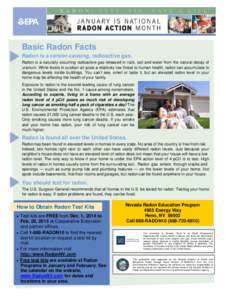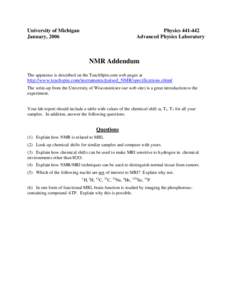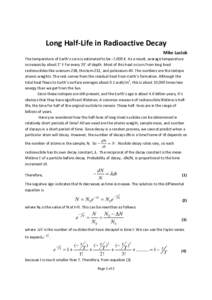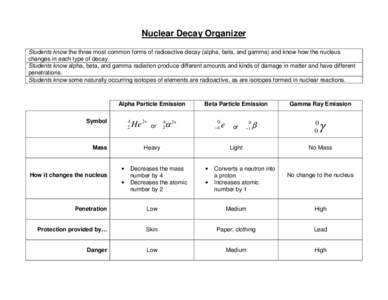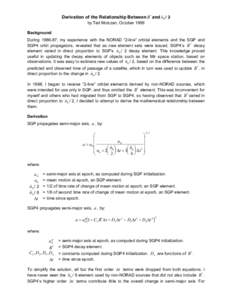 Date: 2014-03-04 13:06:01Mathematics Epoch Orbital elements Radioactive decay Simplified perturbations models Mean motion Orbit Logarithm Semi-major axis Celestial mechanics Space Physics | |  Derivation of the Relationship Between B * and n&[removed]by Ted Molczan, October 1999 Background During, my experience with the NORAD “2-line” orbital elements and the SGP and SGP4 orbit propagators, revealed Derivation of the Relationship Between B * and n&[removed]by Ted Molczan, October 1999 Background During, my experience with the NORAD “2-line” orbital elements and the SGP and SGP4 orbit propagators, revealed
Add to Reading ListSource URL: www.satobs.orgDownload Document from Source Website File Size: 81,29 KBShare Document on Facebook
|

 Derivation of the Relationship Between B * and n&[removed]by Ted Molczan, October 1999 Background During, my experience with the NORAD “2-line” orbital elements and the SGP and SGP4 orbit propagators, revealed
Derivation of the Relationship Between B * and n&[removed]by Ted Molczan, October 1999 Background During, my experience with the NORAD “2-line” orbital elements and the SGP and SGP4 orbit propagators, revealed 